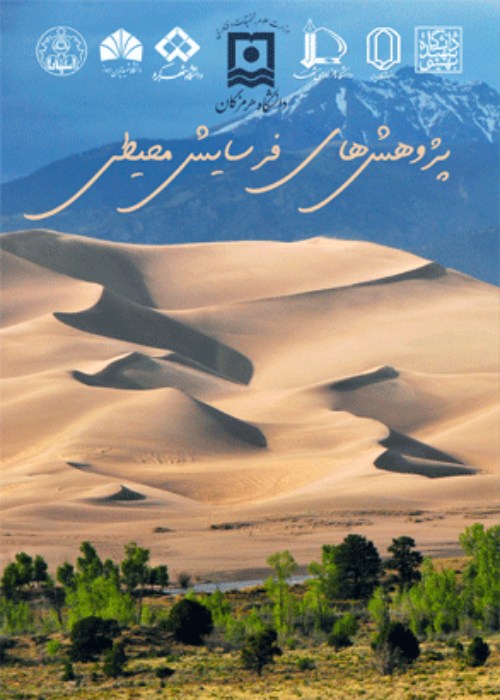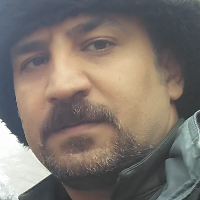Detection of Coastline Using Satellite Image-Processing Technique
Author(s):
Article Type:
Research/Original Article (دارای رتبه معتبر)
Abstract:
1-
2-
The data processed at Level-1 on Landsats satellites were digital numbers (DN). Since these data were processed in the Pre-Collection and at the L1T level, they were calibrated radiographically, and were geometrically corrected, and did not need to be corrected. Sentinel-2A satellite data were generated at Level-1C containing high reflectivity images of each bar. Since these data were processed at Level-C1, they were calibrated radiometrically, and were geometrically corrected, and did not need to be corrected.
Peak signal to noise ratio (PSNR) was defined by the MSE statistical index. If the PSNR was higher and MSE was lower, the corresponding filter was better. The PSNR was used as a quality scale between the reference image (signal) and the processed image. With this scale, between the three-edge detector filter, the best filter was selected. For PSNR, the reference image was used to compare the result of each filter. In this research, the signal was NDVI > 0 image made from the Sentinel-2A satellite data. A comparison between the reference image and the tested image was based on the location and pixel value from the peer-to-peer array between the two images in the orthogonal coordinate system similar to Cartesian. The evaluated image, representing the features of a location (in this study used map coordinate) was identical to the reference image, and the evaluation of the image with a location or different range of under cover with the reference image was not correct. In this study, the subsets with the same map coordinates were obtained, and then, after running some more processing on them, they were still at the same map coordinate.
3-
4- Conclusions & Suggestions: The results showed tangible changes with varying ranges on coasts and coastlines. These changes may be due to factors such as (1) the change in the level of the Caspian Sea during the study period, (2) the change in the coastal area, assuming that the Caspian Sea level was constant, etc. From 2001 to 2016, the changes observed on the northeastern coast of the Miankale peninsula was less. Coastal vulnerability from the factors such as rapid change in the sea level may vary from East to West of this area. This article provided some background information for future research on coastal conservation and management.
Introduction
Coasts maintain their natural sustainability without human intervention and in spite of short-term changes, we are ultimately confronted with a coastal healthy environment, i.e. natural, rocky beaches, sandy beaches and so on. Today's use of remote sensing in most natural sciences is widespread. Due to the fact that fieldwork is costly and time-consuming, using image processing techniques can detect the phenomenon of these images. With regard to the advancement of computer sciences, various algorithms are being updated, which increases the detection magnitude of the phenomenon to be considered. The purpose of this study was to apply a number of edge detection methods, compare them and optimize the edge detection results for coastline detection based on the remote sensing data in the study area.2-
Methodology
Edge detection is an image processing technique for finding the boundaries of the objects inside the image due to the difference in pixels brightness. In Matlab software, filters such as Sobel, Prewitt and Zerocross are used to find edges in the images of varying intensity (brightness) and in binary images. The data processed at Level-1 in Landsat sensor included DN. Due to the Sentinel-2A sensor data file name, the data were generated at Level-1C and included the reflection of each bands. Landsat imagery was used for the coastline detection process. Sentinel-2A data (reflectivity) was used in the process of evaluating the results. In this paper, three edge detection filters were implemented with Matlab software to detect the coastline on the image of NDVI more than zero (NDVI > 0) made of Landsat 8 bands that showed non-water sections in the image. To find the accuracy of the filter, a reference image was needed to calculate the result of each filter based on it. The reference image should be binary and indicate the location of water and non-water. For this purpose, a NDVI image was constructed from the Sentinel-2A bands. Pixel values more than zero were calculated from NDVI made of Sentinel-2A bands (NDVI > 0) to create a binary image. This image was used as a reference image. The best filter was also applied for NDVI > 0 images of two other Landsat sensors.The data processed at Level-1 on Landsats satellites were digital numbers (DN). Since these data were processed in the Pre-Collection and at the L1T level, they were calibrated radiographically, and were geometrically corrected, and did not need to be corrected. Sentinel-2A satellite data were generated at Level-1C containing high reflectivity images of each bar. Since these data were processed at Level-C1, they were calibrated radiometrically, and were geometrically corrected, and did not need to be corrected.
Peak signal to noise ratio (PSNR) was defined by the MSE statistical index. If the PSNR was higher and MSE was lower, the corresponding filter was better. The PSNR was used as a quality scale between the reference image (signal) and the processed image. With this scale, between the three-edge detector filter, the best filter was selected. For PSNR, the reference image was used to compare the result of each filter. In this research, the signal was NDVI > 0 image made from the Sentinel-2A satellite data. A comparison between the reference image and the tested image was based on the location and pixel value from the peer-to-peer array between the two images in the orthogonal coordinate system similar to Cartesian. The evaluated image, representing the features of a location (in this study used map coordinate) was identical to the reference image, and the evaluation of the image with a location or different range of under cover with the reference image was not correct. In this study, the subsets with the same map coordinates were obtained, and then, after running some more processing on them, they were still at the same map coordinate.
3-
Results
Detection of various features of coastal zones is one of the important factors in the implementation and management of natural resources and the implementation of coastal projects. The purpose of this paper was to reveal the coastline and their changes in the Miankaleh region between 2001, 2009, and 2016. Three-edge detector filters were used on the processed images to gain the coastlines. The results of image processing and signal-to-noise calculations as well as the mean square error, comparing the image of NDVI > 0 from Sentinel-2 sensor and the filtered images, showed that the Zerocross filter was better than the rest.4- Conclusions & Suggestions: The results showed tangible changes with varying ranges on coasts and coastlines. These changes may be due to factors such as (1) the change in the level of the Caspian Sea during the study period, (2) the change in the coastal area, assuming that the Caspian Sea level was constant, etc. From 2001 to 2016, the changes observed on the northeastern coast of the Miankale peninsula was less. Coastal vulnerability from the factors such as rapid change in the sea level may vary from East to West of this area. This article provided some background information for future research on coastal conservation and management.
Language:
Persian
Published:
Environmental Erosion Researches, Volume:7 Issue: 4, 2018
Pages:
58 to 81
magiran.com/p1845552
دانلود و مطالعه متن این مقاله با یکی از روشهای زیر امکان پذیر است:
اشتراک شخصی
با عضویت و پرداخت آنلاین حق اشتراک یکساله به مبلغ 1,390,000ريال میتوانید 70 عنوان مطلب دانلود کنید!
اشتراک سازمانی
به کتابخانه دانشگاه یا محل کار خود پیشنهاد کنید تا اشتراک سازمانی این پایگاه را برای دسترسی نامحدود همه کاربران به متن مطالب تهیه نمایند!
توجه!
- حق عضویت دریافتی صرف حمایت از نشریات عضو و نگهداری، تکمیل و توسعه مگیران میشود.
- پرداخت حق اشتراک و دانلود مقالات اجازه بازنشر آن در سایر رسانههای چاپی و دیجیتال را به کاربر نمیدهد.
In order to view content subscription is required
Personal subscription
Subscribe magiran.com for 70 € euros via PayPal and download 70 articles during a year.
Organization subscription
Please contact us to subscribe your university or library for unlimited access!




